Juniper ordinary "Repanda": description, tips for planting and care
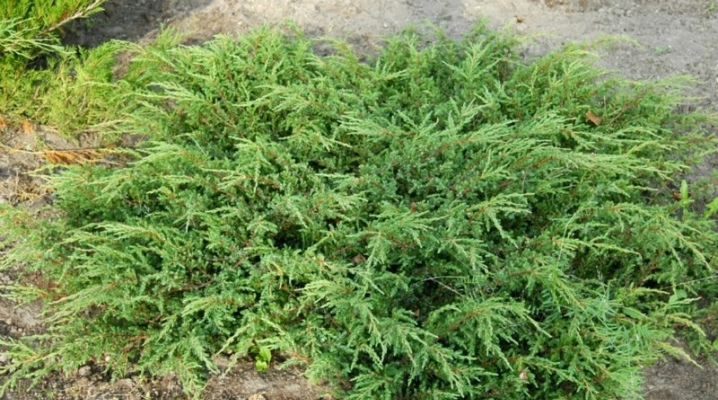
"Repanda" is a juniper bred by selection at the beginning of the last century in Ireland. The evergreen coniferous plant enjoys well-deserved popularity due to its unpretentiousness, high winter hardiness, and the ability to grow in different climatic zones. A compact, outwardly attractive culture is the best suited for the decoration of gardens and backyard territories.
Description of culture
Juniper ordinary "Repanda" - it is a creeping low-growing shrub belonging to the Cypress family... Outwardly it is a sprawling bush height from 30 cm to 0.5 m, crown circumference is 2-2.5 m. The plant reaches this size by about 20 years with an annual growth of about 10 cm in width. A tree-like form with an erect, branched trunk is quite rare; this species has a height of 4 to 12 m.
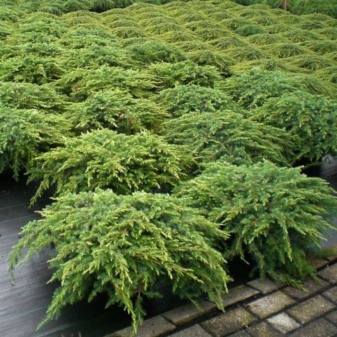
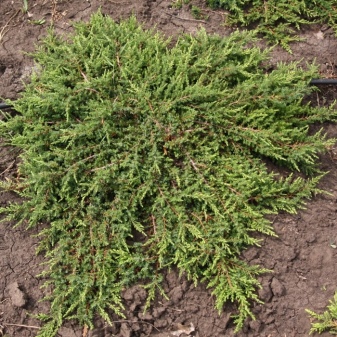
Characteristic features of "Repanda".
- The pyramidal, conical or hemispherical shape of the aboveground part is dark green in color with a silvery sheen. In autumn, the needles turn reddish brown.
- Juniper branches are dense, dense, lateral shoots extend from the trunk in different directions. Densely planted needles in the form of needles seem to be prickly in appearance, but they are soft to the touch.
- The lower branches are actually at ground level, parallel to its surface.
- In young bushes, the bark is brown with a pronounced reddish tint, in mature plants it acquires a dark brown tone.
- The Irish juniper is a dioecious crop that has male and female reproductive organs. The plant begins to bear fruit at the age of 10 years, 2 years of flowering.
- The female cones are quite large, green and oval-shaped, fragrant with resin. They are 7-10 ml in diameter. Ripening, they become silvery-blue due to a light gray bloom. On the cut, you can see the beet-colored flesh.
- Male fruits look like elongated yellow spikelets located at the base of the stem and leaf.
- The plant blooms in early summer, bears fruit in August-September. Subsequently, seeds tightly closed in scales appear.
The life span of the plant is about 600 years or more, although this is a characteristic feature of all junipers.
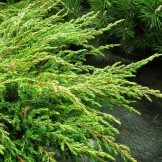
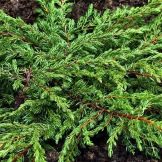
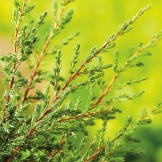
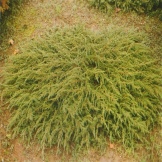
Growing conditions
Common juniper can grow in sunny areas, but also in partial shade. However, it is not worth planting "Repanda" in a completely shaded place - it may lose its specific decorative color of the needles.
The frost resistance of the plant is well known - it can withstand frosts down to -30 degrees, however, this does not apply to young and recently planted specimens, which in the first years need to be protected with a covering material.
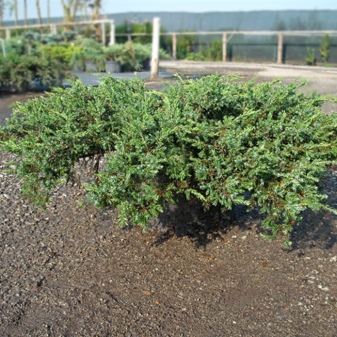
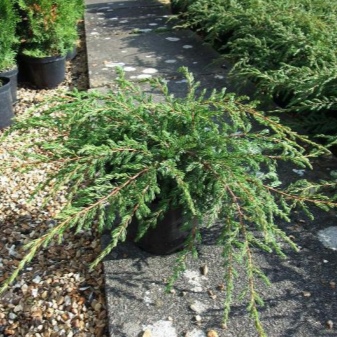
An ephedra like "Repanda" needs a well-drained, loose soil, because oxygen is vital for the roots.... A soil with a low alkali and acid content is suitable for the plant. Sand soil is a mixture of clay and sand with an acidity of 4.5-5.5 pH. Ideally, this is a moderately moist fertile soil with optimal drainage, preventing waterlogging and liquid stagnation, which is dangerous for the root system of "Repanda".
For juniper bushes you should choose places on the south side (both open and partial shade)... When determining the site, it is necessary to take into account the depth of the groundwater - they should not be close to the surface. It is worth considering in advance that the young seedlings have protection from strong winds - spontaneous impulses can break and confuse delicate shoots. The culture treats the air with a high level of pollution calmly.
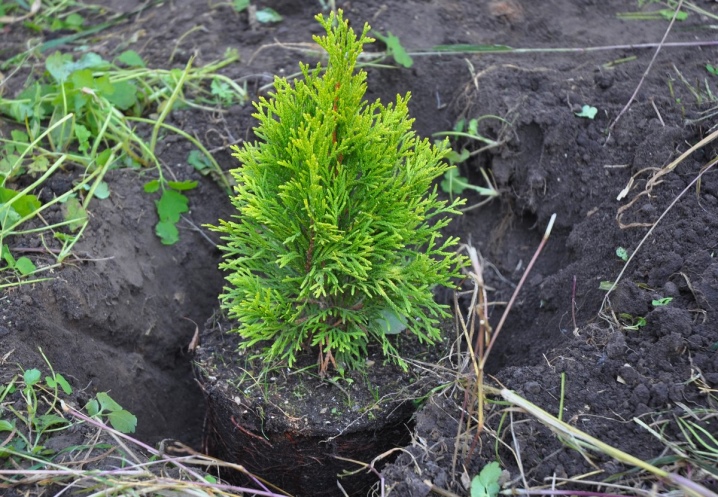
How to plant correctly?
You can plant junipers in spring and autumn, but experienced gardeners believe that it is better to root the plant in the spring months - in April or May. Since the culture is propagated by seeds, layering and cuttings, you can choose any method of its cultivation, but it should be borne in mind that it is quite difficult to grow a varietal plant from seeds, and there is always a large percentage of the risk that juniper will lose its varietal characteristics.
If there is no desire to independently engage in cuttings or ground the lower shoots, then there is an opportunity to buy quality seedlings in special horticultural complexes. You need to choose a plant with healthy needles, no damage to the stems and always with an earthen lump. Usually the roots of the commercial plants are neatly packed with the soil in burlap or containers.
Plants placed in large containers (3-5 l) take root best of all.
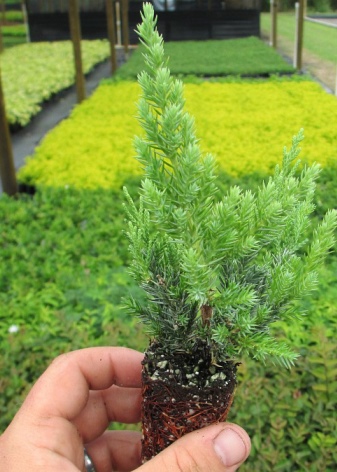
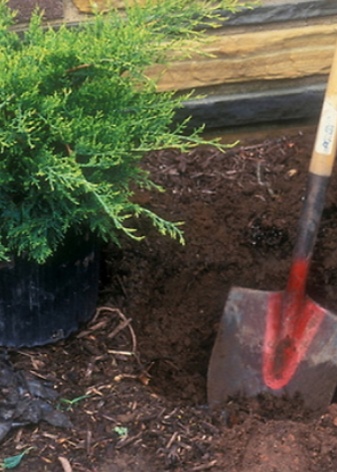
Before planting, a soil substrate is prepared to fill the planting pit - it includes sod land, peat and sand. A complex product for this type of crops is also added there. In advance, you need to prepare a hole 10 cm deep and 3 times the diameter of the root system. Expanded clay, coarse sand, broken brick are placed at its bottom - the thickness of the drainage should be at least 20 cm. The substrate and fertilizer are poured on top: "Nitroammofoska" (200-300 g) or natural material, for example, the surface soil layer of pine or spruce, pine needles - it will nourish the roots. All these blanks carry out two weeks before disembarkation.
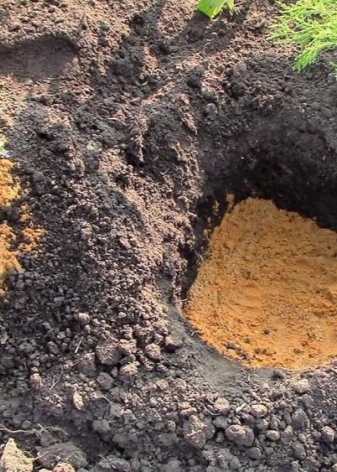

Landing subtleties
- You should not plant junipers on dry and hot days, especially young seedlings with open roots. It is advisable to do this in the absence of the sun and high humidity.

- Before planting, the roots are dipped in water for 2 hours. For rapid formation of the root system, it is treated with any suitable growth biostimulant shortly before immersion in the soil.
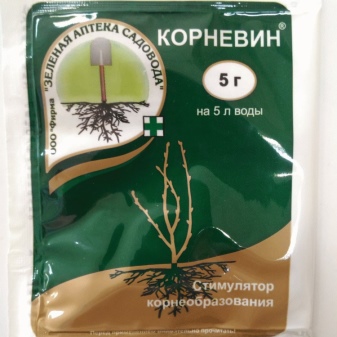
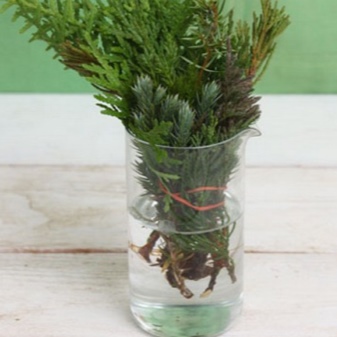
- A group of bushes is planted with an interval of 1.5-2 m if their planting involves the creation of a hedge. Single plants - taking into account nearby objects: buildings, structures, fences, other trees and shrubs.
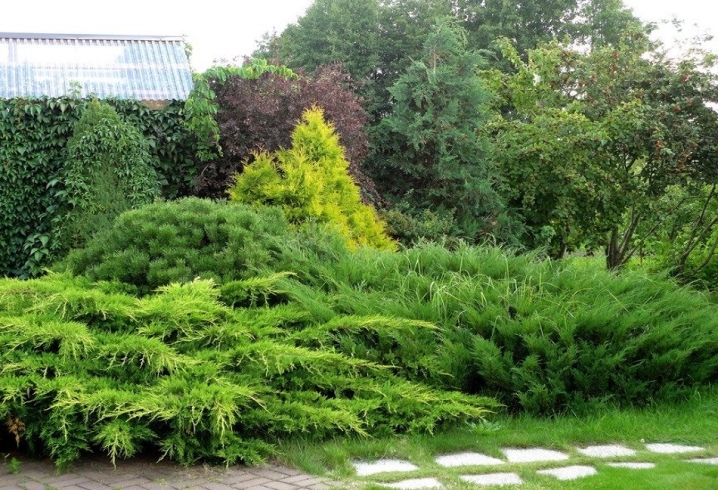
- The plant is immersed in the center of the hole, carefully sprinkling the earth and spreading the root processes. It is impossible for the root collar to be too deep: in a sufficiently large plant it should be 5-10 cm from the soil surface, in a small plant it should be flush with it.

- After completing the placement, you need to water the soil around the seedling abundantly, and when the water is absorbed, mulch the surface with sawdust, chips and peat by 6-7 cm. For 7 days, the planted conifers need moderate daily irrigation.
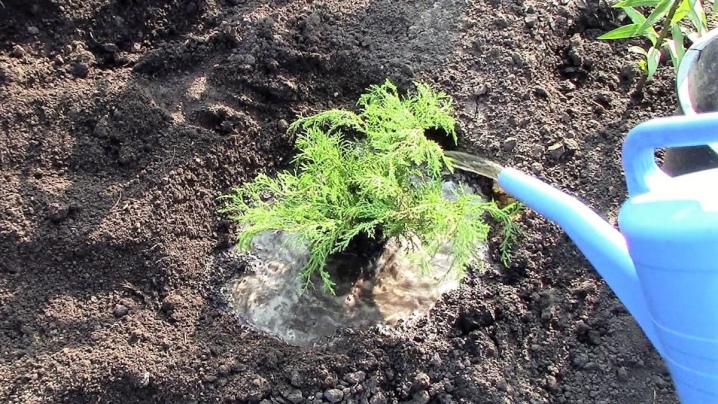
Container sprouts are planted in both spring and autumn - they quickly adapt to new conditions and grow well.

Juniper care
Young, recently planted bushes require regular attention. Mature plants are more undemanding to growing conditions. Consider what is needed for good growth and high vitality of the Irish juniper.
- Regular irrigation - seedlings need watering up to 2 times a week, an adult bush - 2 times a month. In hot weather, spraying is carried out twice a day (morning and evening), up to 3 times in 7 days. One ephedra should take at least 12 liters of water.
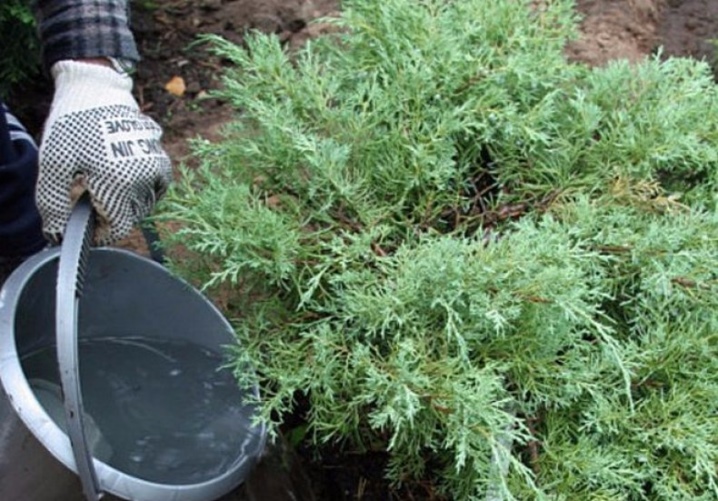
- Loosening, weeding and placing mulch the near-stem zone is always accompanied by watering. Mulch with chips, peat and sawdust after irrigation.

- It is necessary to fertilize plants in the spring, for this they use a complex mineral fertilizer containing nitrogen, potassium and phosphorus... It must be dug up along with the soil near the trunk, and then watered. If the soil is not too fertile, then fertilizing should be carried out monthly during the growing season.
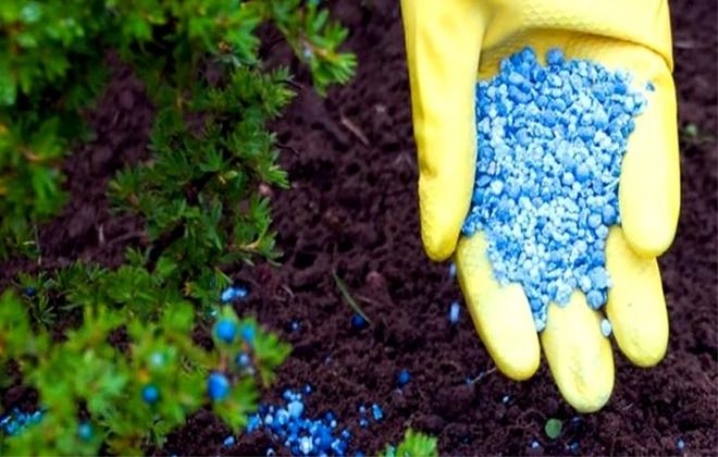
- Juniper of this variety does not require artistic pruning, an exception is considered to be group planting in the form of a hedge, and then it is allowed to trim branches out of the general row. But in spring and summer, the sanitary removal of dry, lifeless, sick and spoiled shoots is carried out, sometimes it is necessary to shorten excessively long branches.
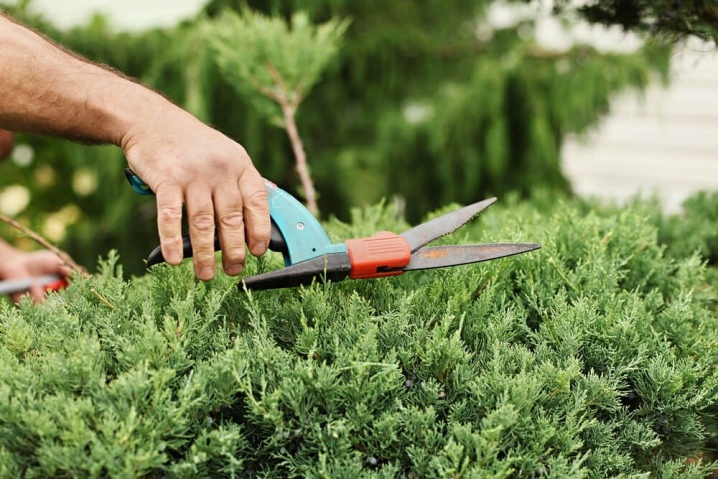
- For the winter, juniper bushes are tied up, mulch the ground with a thick layer of wood shavings, and in regions where there is no snow, shrubs are covered with non-woven covering material. Young plants are insulated without fail.
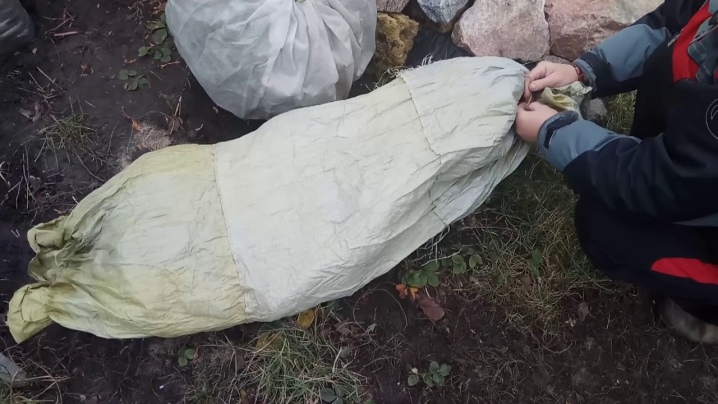
To prevent rust, mold and rot that occurs with excess heat and moisture, you need regularly loosen and mulch the soil, weed weeds. Effective remedies for the prevention and treatment of juniper - Bordeaux liquid, copper sulfate and Arcerida solution.

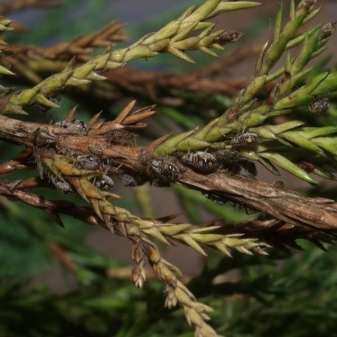
Planting seed and cuttings
For sowing seeds, berries are used that did not have time to completely darken, late collection is undesirable due to long germination. The seeds are preliminarily stratified by placing them in a moistened substrate of peat, sand and moss, and covering them on top with another layer of soil mixture.
In cold weather, including winter, the containers with seeds should be outside (about 5 months). Thanks to this hardening, rapid germination occurs. At the end of spring, the prepared material is sown in open ground, carrying out the usual agricultural work - watering, weeding and loosening. The grown sprouts can be moved to their permanent residence.
It is best to propagate "Repanda" by cuttings. Young shoots up to 10 cm long with a piece of bark are cut in spring. After cleansing the needles, keep the branches in a growth stimulant solution. In order for the roots to form faster, the cuttings are planted in a peat mixture and covered with a film. Plants should be kept in a dark room.
The main chores at this moment are associated with constant moistening of the substrate and airing.
The formation of roots in a juniper takes 1-1.5 months, and then it can be planted on the site.
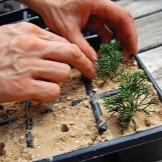
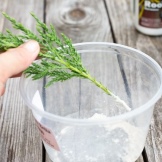
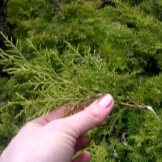
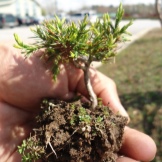
Use of "Repanda" in landscape design
Juniper of this variety is suitable not only for planting in the form of natural fences.
- "Repanda" can be used to create alpine slides and rockeries. The shrub is combined with other conifers, flower species, and can be used to decorate English lawns and a Japanese garden.
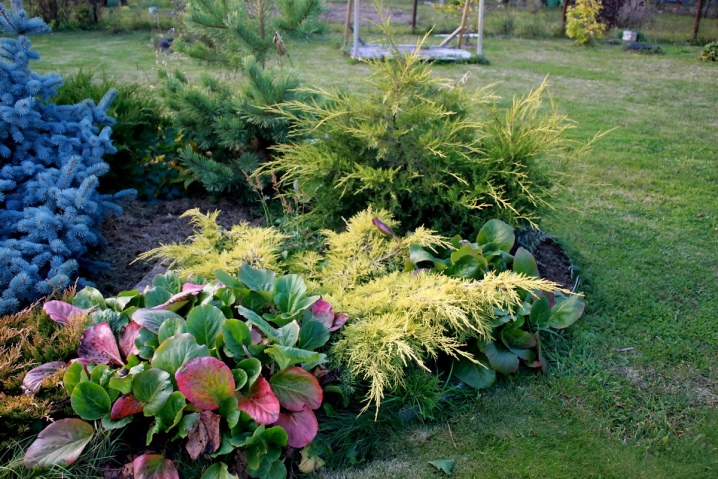
- The plant looks great in composition with other plants - lichens, heather, deciduous shrubs. For example, with spireas - "Japanese" and "Douglas", distinguished by bright colors.

- Common juniper may well be grown in flowerpots and pots, decorate terraces, loggias, porches and even roofs of houses.
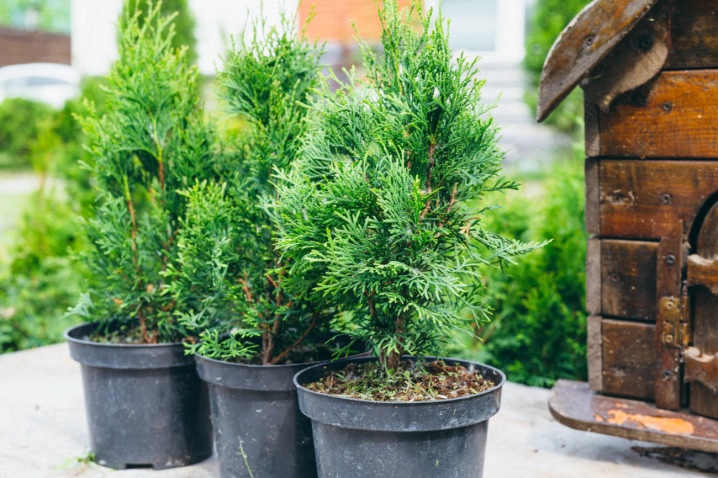
Tips for growing "Repanda" juniper are given in the following video.



































































The comment was sent successfully.